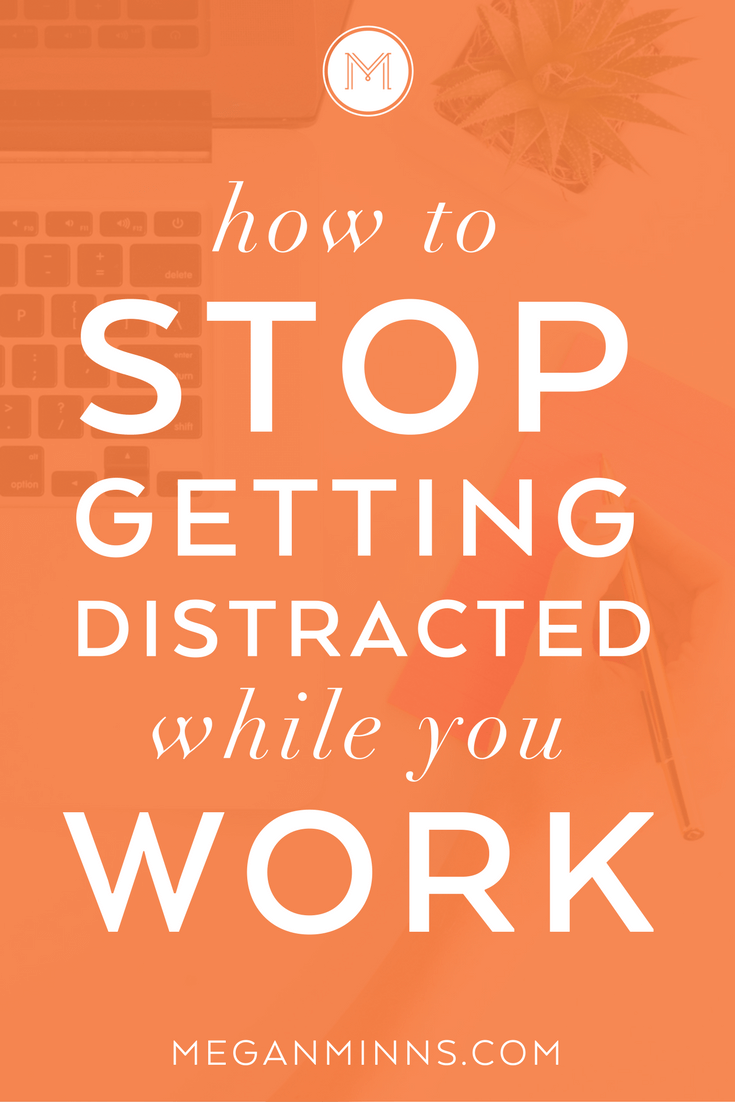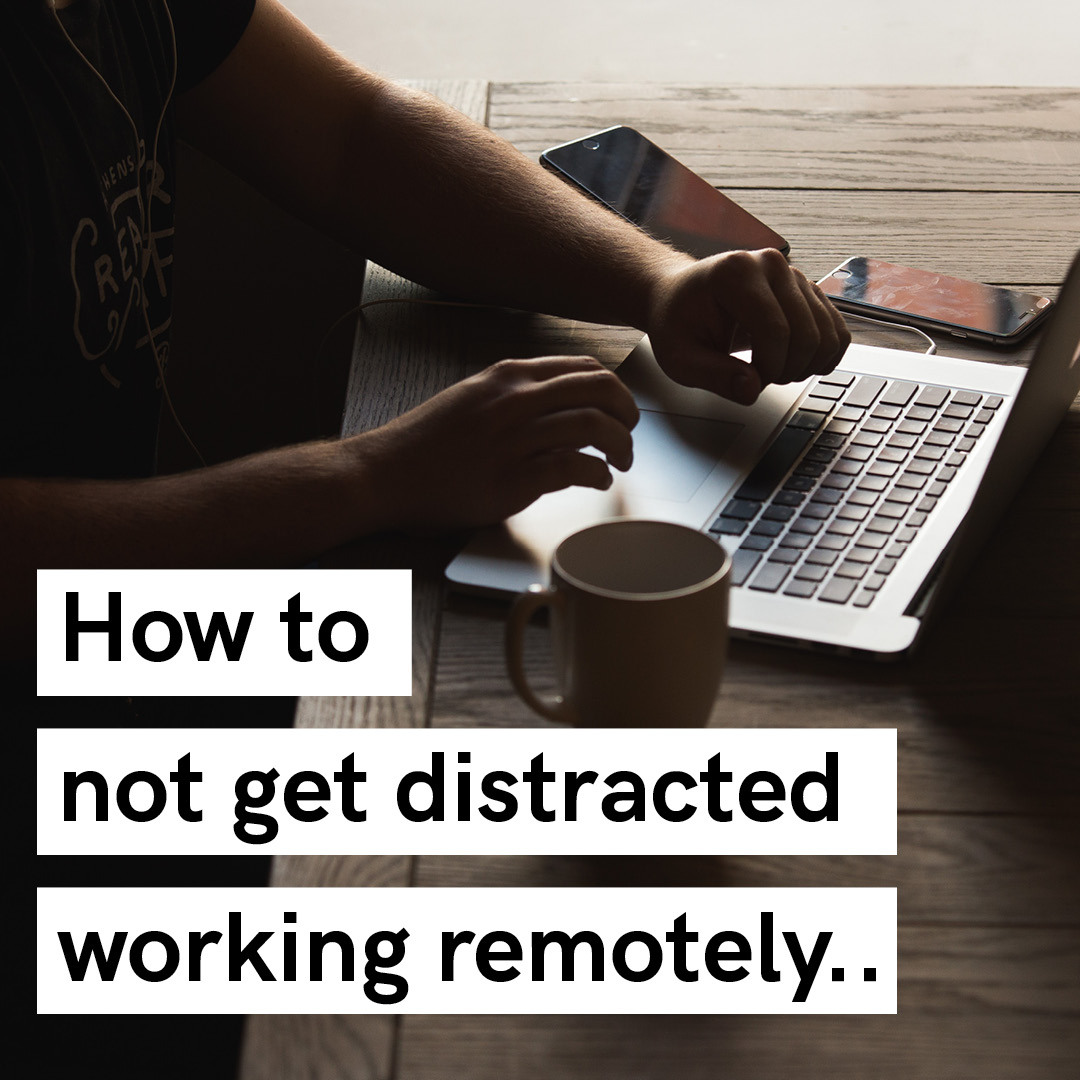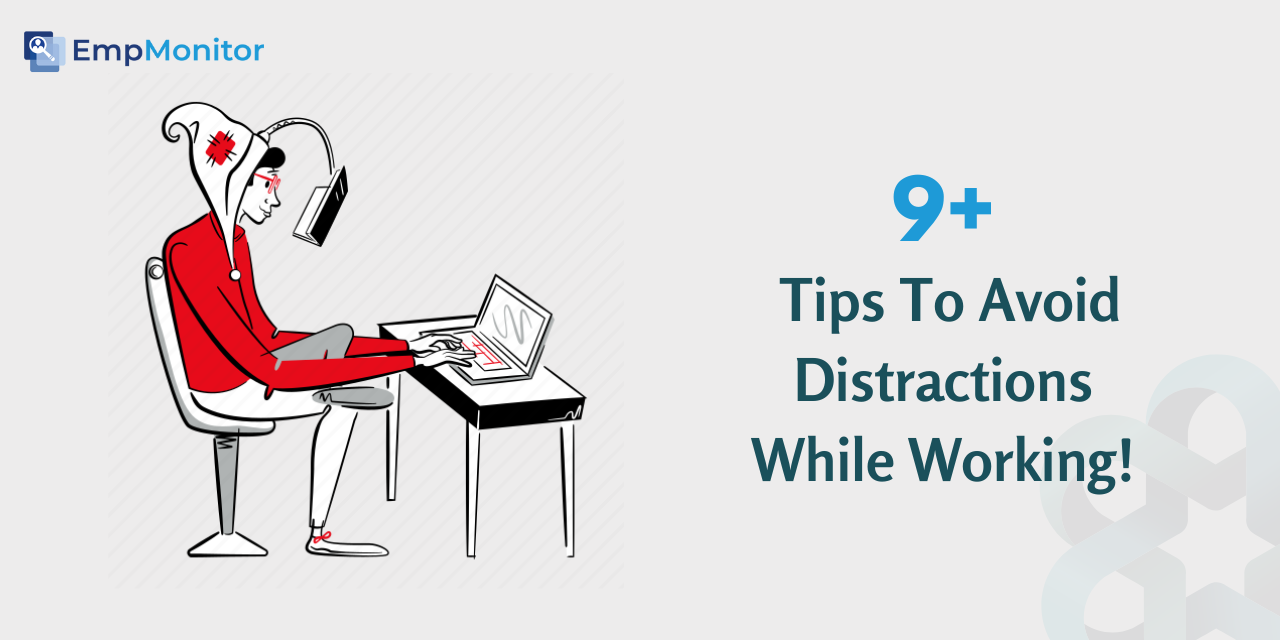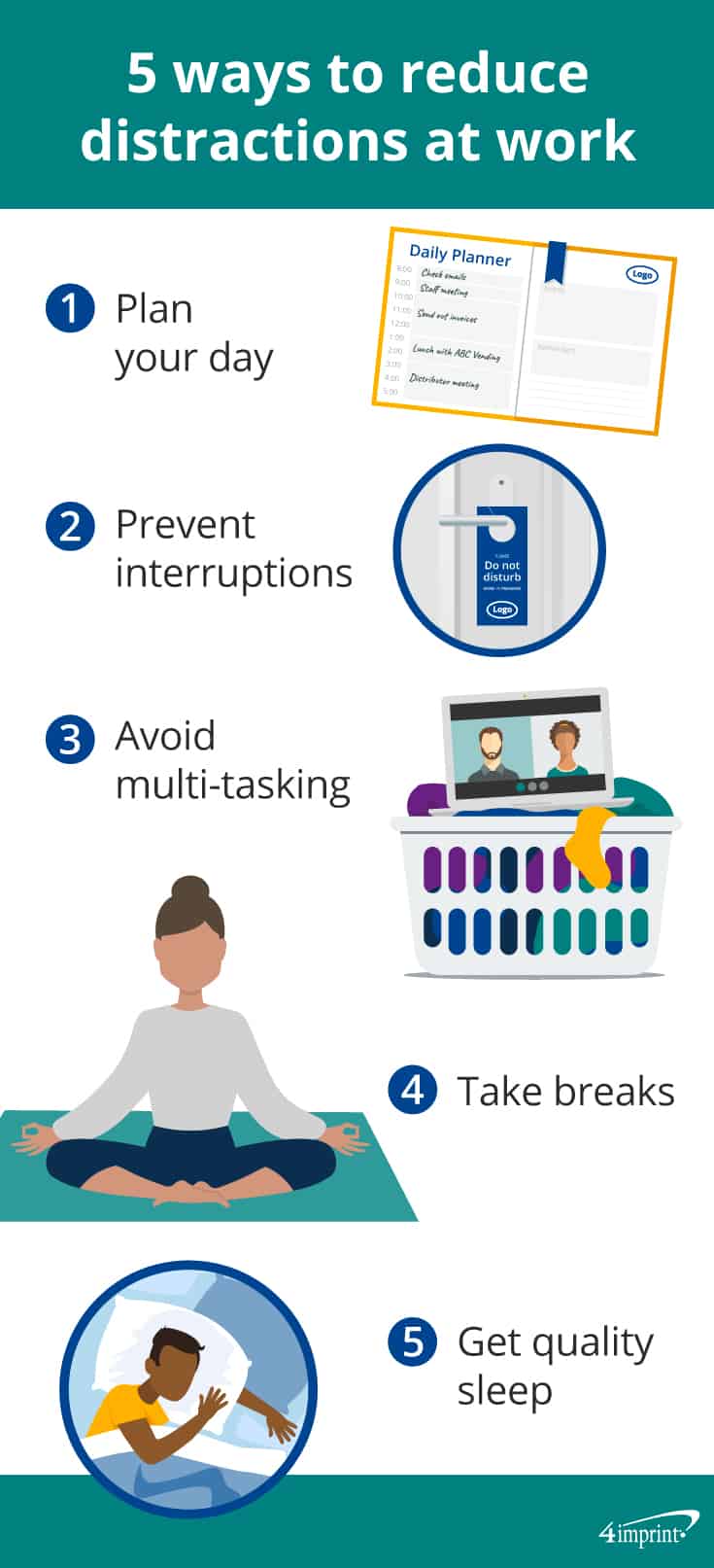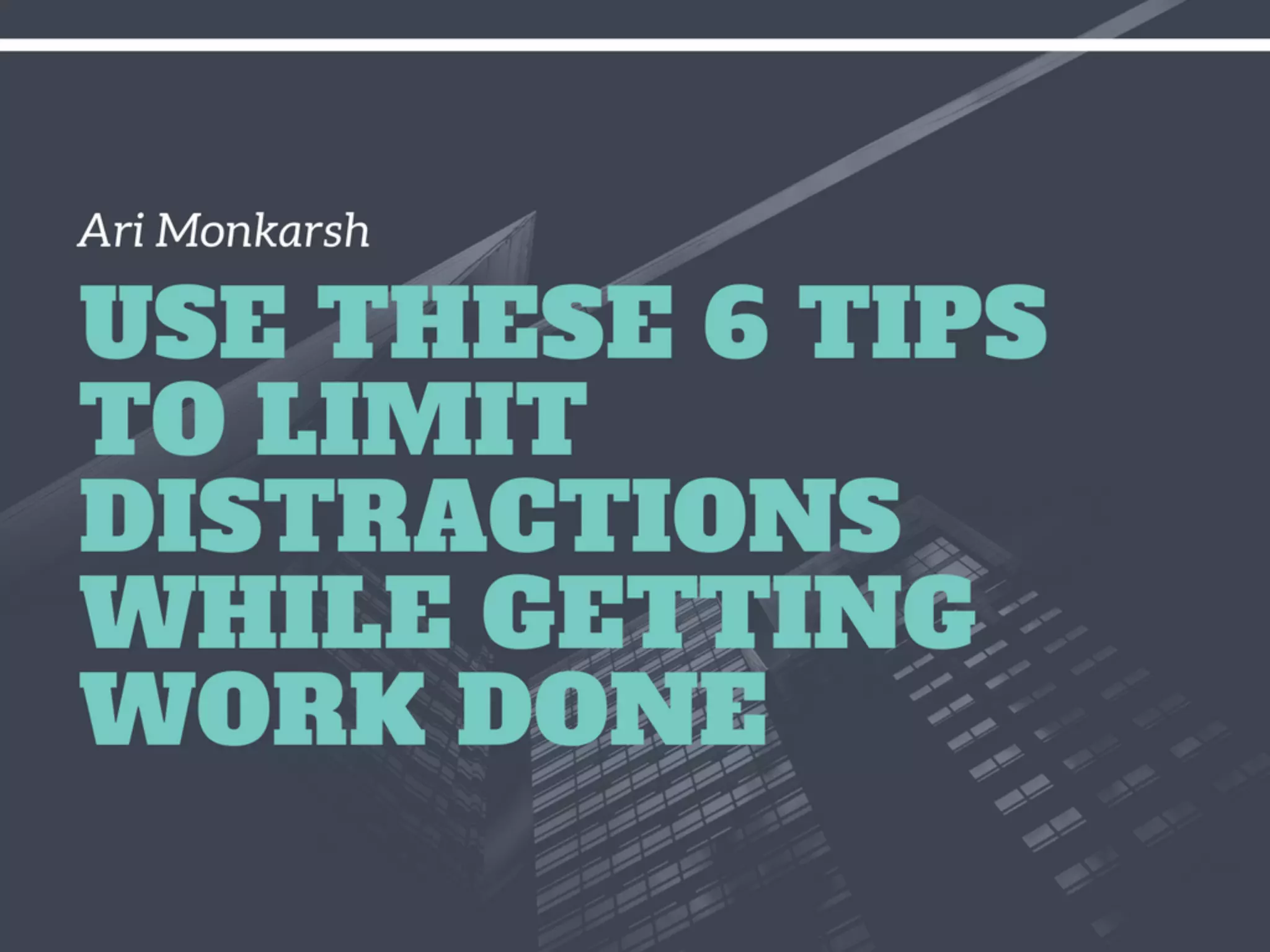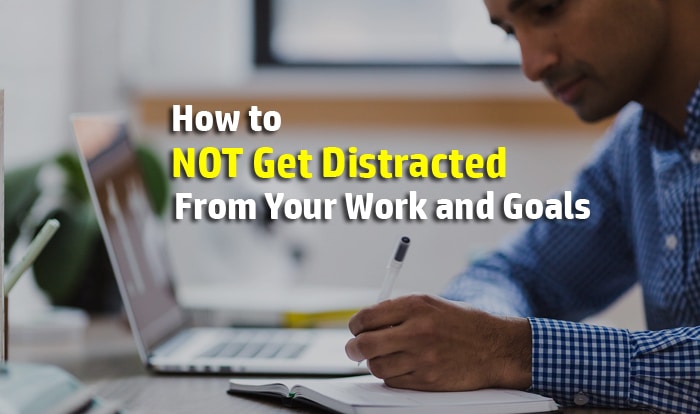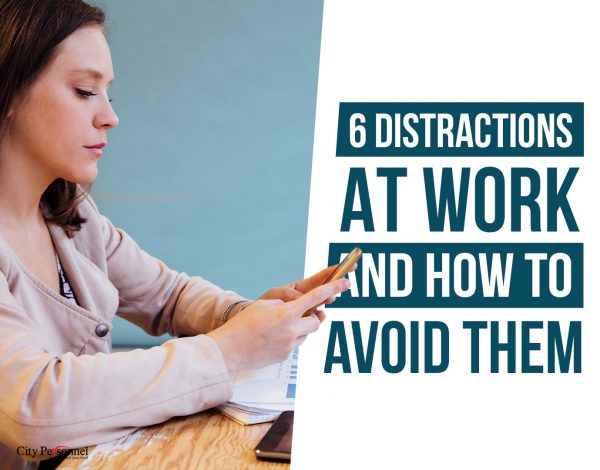How To Not Get Distracted While Working

Focus fading fast? Productivity plummeting? You're not alone. Digital distractions are costing individuals and companies billions, but actionable strategies exist to reclaim your attention and boost your output.
This article provides a concise guide to immediately implementable techniques for minimizing distractions and maximizing focus, backed by research and expert advice.
Identify Your Kryptonite
The first step is pinpointing your primary distractions. Is it social media notifications? Email alerts? Noisy coworkers? A cluttered workspace?
A recent study by RescueTime found that users spend an average of 3 hours and 15 minutes per day on distracting apps and websites. Awareness is half the battle. Log your time for a day or two to understand where your focus truly goes.
Implement Immediate Interventions
Turn off notifications. This simple act can dramatically reduce the urge to constantly check your phone or email. Schedule dedicated times for checking these platforms instead.
Close unnecessary tabs. Each open tab is a potential distraction. Consolidate your browsing and minimize the number of active windows on your screen.
Use website blockers. Tools like Freedom and Cold Turkey can block distracting websites and apps for specified periods. Schedule these blocks during prime work hours.
Optimize Your Environment
Create a dedicated workspace. Designate a specific area solely for work. Keep it clean, organized, and free of distractions. Studies show a clean workspace improves focus and productivity.
Use noise-canceling headphones. Minimize auditory distractions by using noise-canceling headphones or listening to instrumental music or white noise. A 2018 study by Cambridge Sound Management found that sound masking can improve concentration by up to 25%.
Inform your coworkers and family. Let them know when you need uninterrupted time to focus. Set clear boundaries and expectations.
Master Time Management Techniques
The Pomodoro Technique is a highly effective method. Work in focused 25-minute intervals, followed by a 5-minute break. After four "pomodoros," take a longer 20-30 minute break. This structured approach helps maintain focus and prevents burnout.
Time blocking involves scheduling specific tasks for specific blocks of time. This method helps you allocate your time effectively and avoid getting sidetracked.
Prioritize tasks. Start with the most important and urgent tasks first. This ensures that you're focusing your energy on the activities that will have the biggest impact.
Embrace Mindfulness and Breaks
Practice mindfulness. Even a few minutes of daily meditation can improve your ability to focus and reduce stress. Apps like Headspace and Calm offer guided meditation sessions.
Take regular breaks. Stepping away from your work for a few minutes can actually improve your focus and productivity. Get up, stretch, and move around to refresh your mind and body.
Ensure adequate sleep. Lack of sleep significantly impairs cognitive function and makes it harder to focus. Aim for 7-8 hours of quality sleep each night.
Ongoing Effort is Key
Combatting distractions is an ongoing process, not a one-time fix. Regularly evaluate your strategies and adjust them as needed. What works today may not work tomorrow, so flexibility is crucial.
Explore additional resources. Numerous books, articles, and online courses offer in-depth guidance on productivity and focus. Continuously seek new strategies to improve your performance.
Stay committed to reclaiming your attention. By implementing these techniques and maintaining consistent effort, you can significantly reduce distractions and achieve your goals. The key is consistent application and self-awareness.

